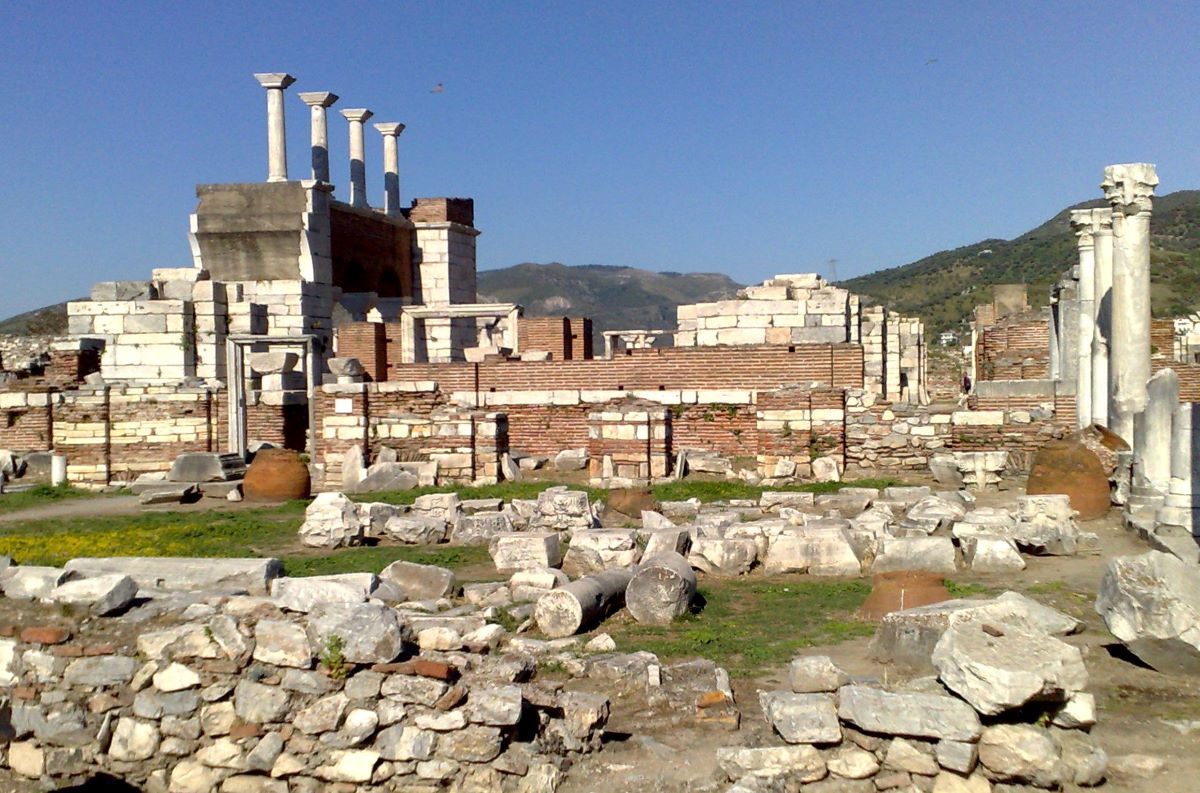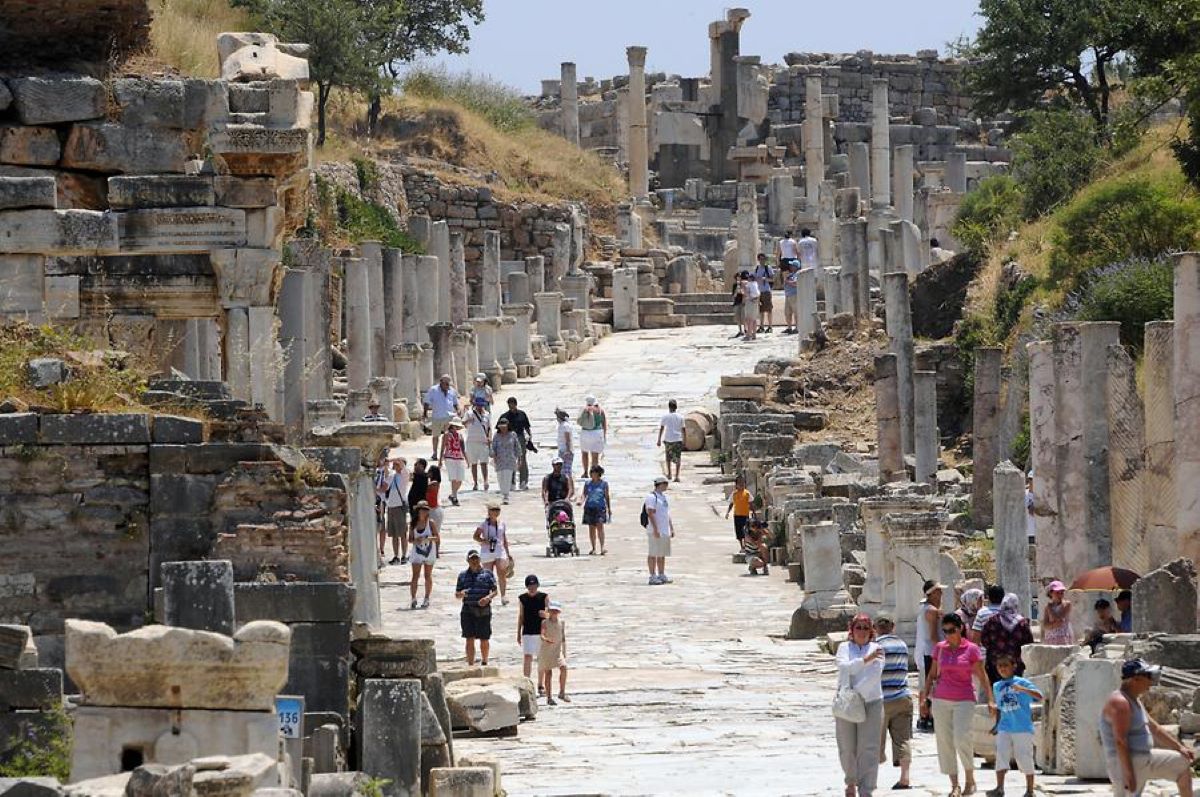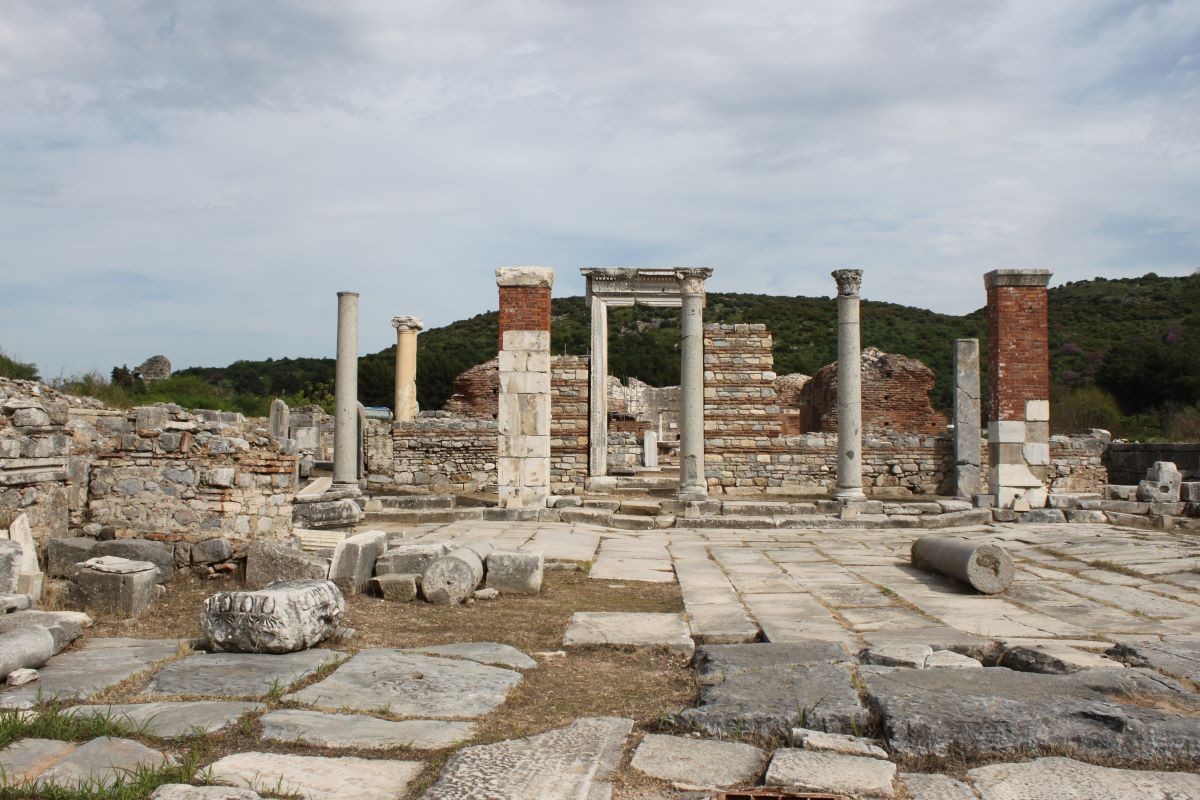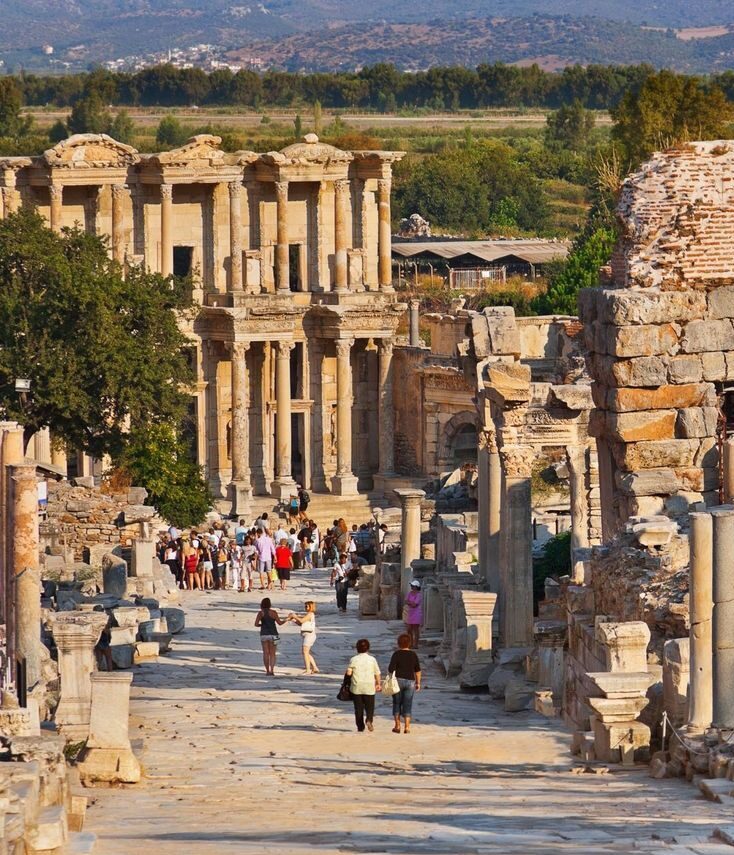The ancient city of Ephesus is a site of remarkable historical significance, with a…

Discovering the Basilica of St. John in Ephesus
 The Basilica of St. John in Ephesus is an intriguing piece of history that holds a rich and diverse past, which has shaped its significance to both Christians and Muslims. Located on Ayasuluk Hill, the basilica overlooks the ancient city of Ephesus in western Turkey. The site was originally a pagan temple dedicated to the goddess Artemis before being converted into a Christian basilica in the 4th century AD. The basilica was built on the site where the apostle John was believed to be buried, making it a site of pilgrimage for the faithful.
The basilica’s design is a testament to its grandeur, with a large central nave flanked by impressive aisles and walls adorned in intricate marble and frescoes. The interior of the basilica was no less impressive, decorated with gold, silver, and precious stones, all serving to highlight its significance and grandeur.
The architecture of the St. John Basilica is a striking example of early Christian architecture. The basilica was built in the 6th century AD and is believed to have been designed by the architect Anthemios, who also designed the Hagia Sophia in Istanbul. The basilica’s design features a central nave flanked by impressive aisles and walls adorned in intricate marble and frescoes. The central nave is topped with a massive dome, which was once decorated with beautiful mosaics depicting scenes from the life of St. John. The aisles and walls are adorned with intricate carvings and frescoes, some of which have survived to this day, providing a glimpse into the artistic and religious culture of the time.
The basilica’s interior was ornately decorated with gold, silver, and precious stones, highlighting its importance and grandeur. The altar of the basilica was located over the tomb of St. John, and it was a place of pilgrimage for the faithful. The tomb of St. John was located beneath the apse of the basilica, and it consists of a small room with a white marble sarcophagus.
The basilica’s architectural style is a mix of Roman, Byzantine, and early Christian architecture. The use of the dome, for example, was a feature of Roman and Byzantine architecture, while the use of mosaics and frescoes was a feature of early Christian art. The result is a beautiful and unique example of religious architecture that is a testament to the cultural and religious heritage of the region.
Despite its magnificence, the basilica endured its fair share of damage over time. It was hit by Arab raids in the 7th and 8th centuries, and Seljuk Turkish invasions in the 12th century, which eventually led to its abandonment in the 14th century.
The site was rediscovered in the early 20th century by Austrian archaeologist Josef Keil, leading to extensive excavations that lasted for decades. It was during this time that the tomb of St. John was uncovered, located beneath the apse of the basilica. The tomb consists of a small room with a white marble sarcophagus, believed to have once contained the remains of the apostle, and decorated with intricate carvings of vines, leaves, and grapes.
The remains of St. John Basilica are located on Ayasuluk Hill and consist of a few standing columns, the basilica’s impressive entrance, and a small chapel.Due to damage over time, only a few elements of the basilica’s original grandeur remain.
One of the most notable features of the remaining structure is the entrance, which includes a massive arch with intricate carvings and sculptures. The entrance was once adorned with bronze doors that were likely looted or destroyed over time. The remaining columns that stand today are also noteworthy, with some reaching up to 8 meters tall.
Another notable feature of the site is the small chapel located near the entrance. This chapel was likely built in the 6th century AD and was dedicated to St. John the Evangelist. It is believed that this chapel was built on the site of the apostle’s tomb, which was later discovered beneath the basilica during excavations in the early 20th century.
Today, the basilica continues to attract visitors from around the world, drawn by its historical and religious significance. It is believed that the Virgin Mary spent her final years in Ephesus and that St. John took care of her until her death, adding to the site’s importance for both Christians and Muslims. The basilica serves as a symbol of the region’s cultural and religious heritage, with a past that spans thousands of years and continues to inspire awe and reverence in all who visit. The Basilica of St. John in Ephesus is a captivating testament to the endurance of history, with a past that has shaped its significance to people around the world.
The Basilica of St. John in Ephesus is an intriguing piece of history that holds a rich and diverse past, which has shaped its significance to both Christians and Muslims. Located on Ayasuluk Hill, the basilica overlooks the ancient city of Ephesus in western Turkey. The site was originally a pagan temple dedicated to the goddess Artemis before being converted into a Christian basilica in the 4th century AD. The basilica was built on the site where the apostle John was believed to be buried, making it a site of pilgrimage for the faithful.
The basilica’s design is a testament to its grandeur, with a large central nave flanked by impressive aisles and walls adorned in intricate marble and frescoes. The interior of the basilica was no less impressive, decorated with gold, silver, and precious stones, all serving to highlight its significance and grandeur.
The architecture of the St. John Basilica is a striking example of early Christian architecture. The basilica was built in the 6th century AD and is believed to have been designed by the architect Anthemios, who also designed the Hagia Sophia in Istanbul. The basilica’s design features a central nave flanked by impressive aisles and walls adorned in intricate marble and frescoes. The central nave is topped with a massive dome, which was once decorated with beautiful mosaics depicting scenes from the life of St. John. The aisles and walls are adorned with intricate carvings and frescoes, some of which have survived to this day, providing a glimpse into the artistic and religious culture of the time.
The basilica’s interior was ornately decorated with gold, silver, and precious stones, highlighting its importance and grandeur. The altar of the basilica was located over the tomb of St. John, and it was a place of pilgrimage for the faithful. The tomb of St. John was located beneath the apse of the basilica, and it consists of a small room with a white marble sarcophagus.
The basilica’s architectural style is a mix of Roman, Byzantine, and early Christian architecture. The use of the dome, for example, was a feature of Roman and Byzantine architecture, while the use of mosaics and frescoes was a feature of early Christian art. The result is a beautiful and unique example of religious architecture that is a testament to the cultural and religious heritage of the region.
Despite its magnificence, the basilica endured its fair share of damage over time. It was hit by Arab raids in the 7th and 8th centuries, and Seljuk Turkish invasions in the 12th century, which eventually led to its abandonment in the 14th century.
The site was rediscovered in the early 20th century by Austrian archaeologist Josef Keil, leading to extensive excavations that lasted for decades. It was during this time that the tomb of St. John was uncovered, located beneath the apse of the basilica. The tomb consists of a small room with a white marble sarcophagus, believed to have once contained the remains of the apostle, and decorated with intricate carvings of vines, leaves, and grapes.
The remains of St. John Basilica are located on Ayasuluk Hill and consist of a few standing columns, the basilica’s impressive entrance, and a small chapel.Due to damage over time, only a few elements of the basilica’s original grandeur remain.
One of the most notable features of the remaining structure is the entrance, which includes a massive arch with intricate carvings and sculptures. The entrance was once adorned with bronze doors that were likely looted or destroyed over time. The remaining columns that stand today are also noteworthy, with some reaching up to 8 meters tall.
Another notable feature of the site is the small chapel located near the entrance. This chapel was likely built in the 6th century AD and was dedicated to St. John the Evangelist. It is believed that this chapel was built on the site of the apostle’s tomb, which was later discovered beneath the basilica during excavations in the early 20th century.
Today, the basilica continues to attract visitors from around the world, drawn by its historical and religious significance. It is believed that the Virgin Mary spent her final years in Ephesus and that St. John took care of her until her death, adding to the site’s importance for both Christians and Muslims. The basilica serves as a symbol of the region’s cultural and religious heritage, with a past that spans thousands of years and continues to inspire awe and reverence in all who visit. The Basilica of St. John in Ephesus is a captivating testament to the endurance of history, with a past that has shaped its significance to people around the world.




This Post Has 0 Comments